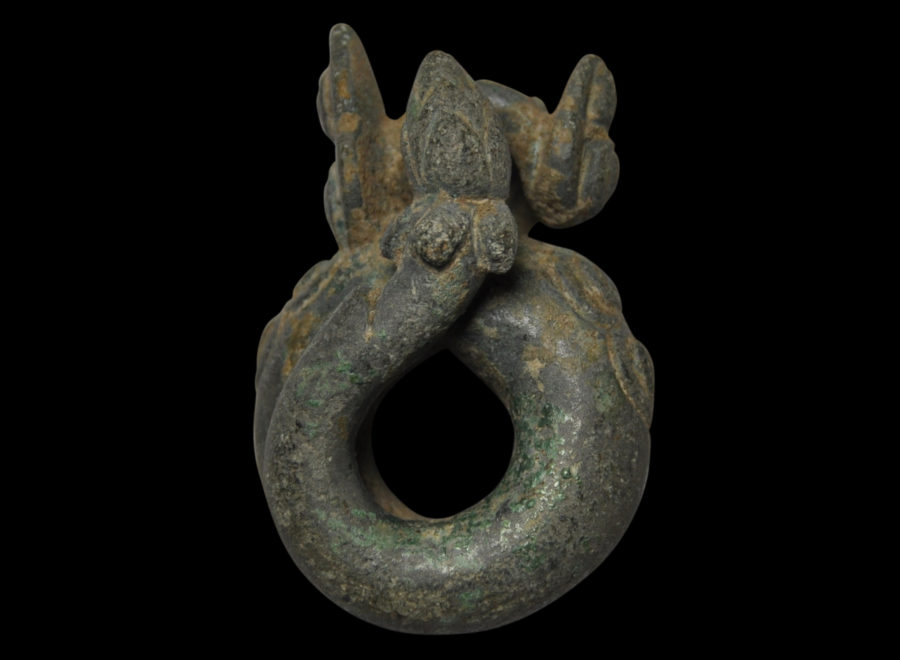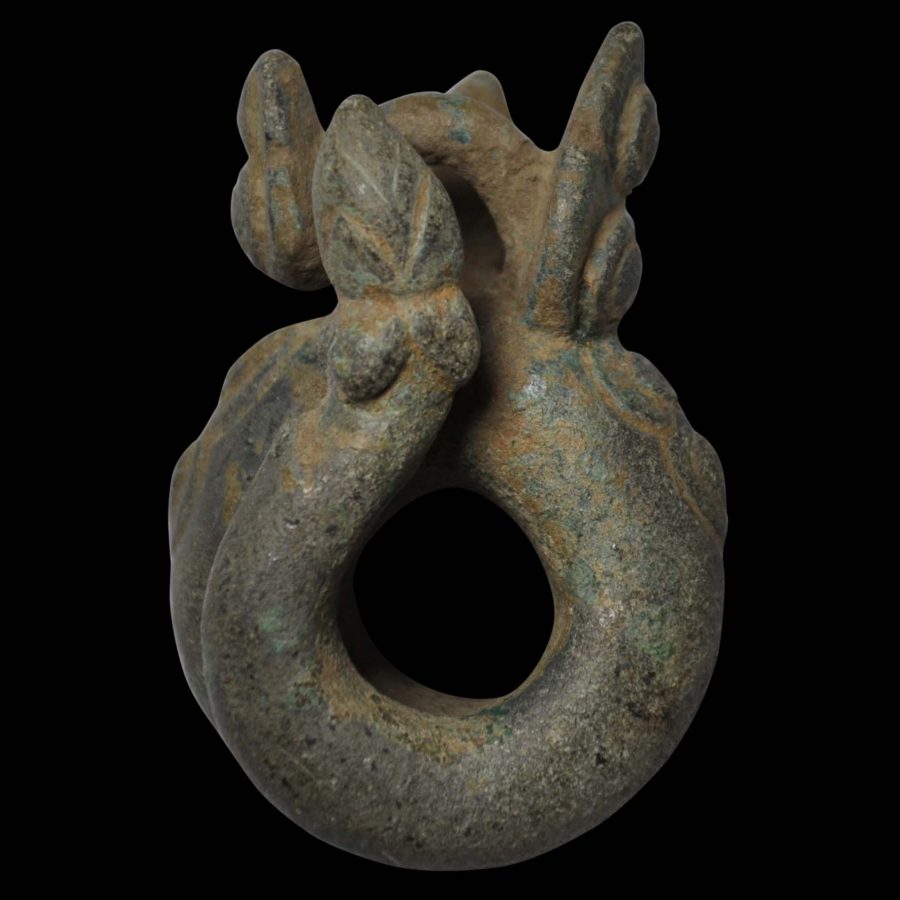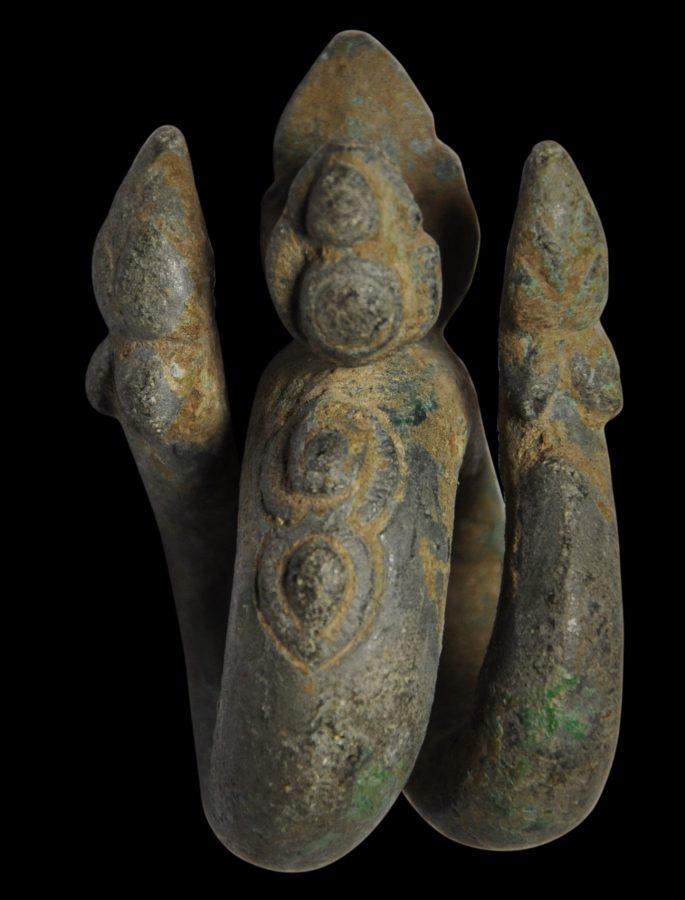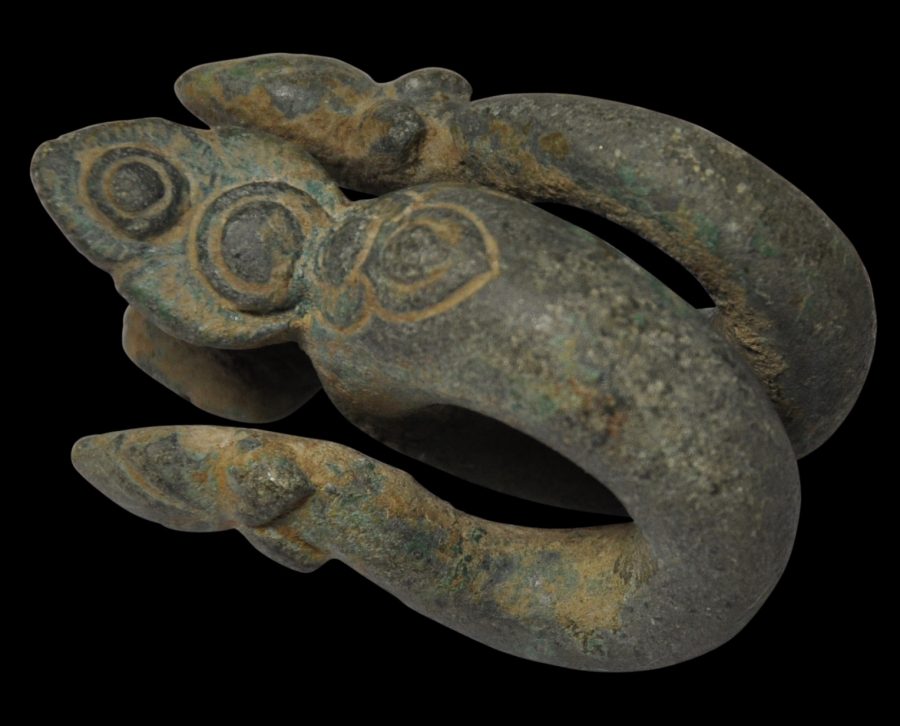This very fine bronze spiral ornament has been cast as a curling, fleshy lotus stalk, which, with lotus bud terminals, almost takes on the appearance of a coiled serpent or naga. The ornament is too thick, big and heavy for human wear; instead it might have adorned a statue as an ear ornament.
Somkiart (2015, p. 463) however argues that these ornaments were not meant for the ear (on a statue or otherwise) but in fact were weights to be used on a plumb line in building and construction. He argues that the ornaments are too impractical to be worn on the ear (statue or human), that many have been found with leather rope remnants attached (the plumb line), and many have also been uncovered in the vicinity of other construction tools. He illustrates a range of similar such objects. Such items thus would have been used by ancient stone masons in their construction of many of the public buildings and temples that still stand today from the Hindu-Buddhist Khmer Empire that was centred on Angkor.
The weight dates to around the 10th-12th century of Cambodia’s Angkor period.
It is in excellent condition, with a fine crystalised surface patina.
References
Richter, A., The Jewelry of Southeast Asia, Thames & Hudson, 2000.
Somkiart Lopetcharat, Lopburi and Thavaravadi Sculptures in Thailand, Siam International Book Company, 2015.





